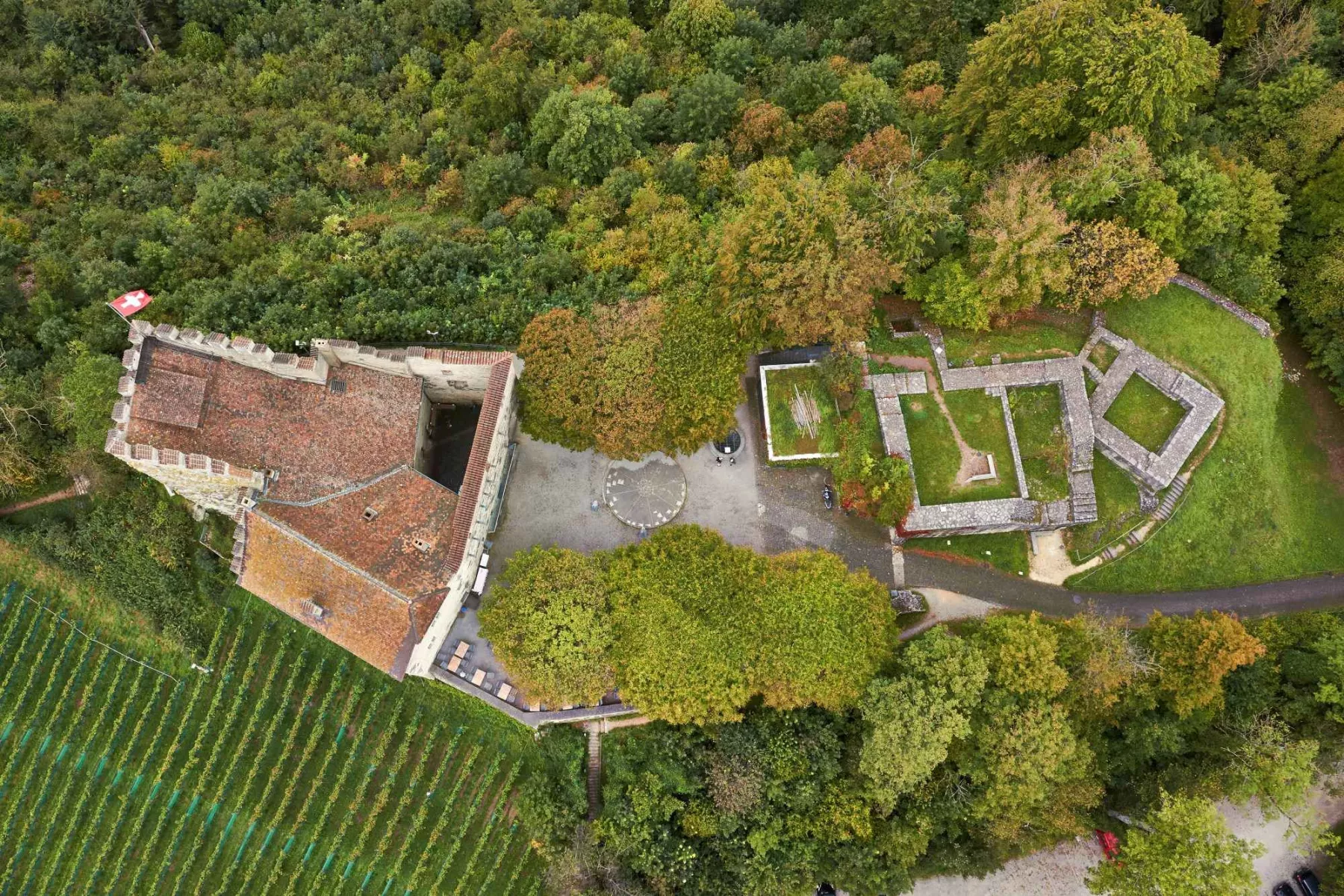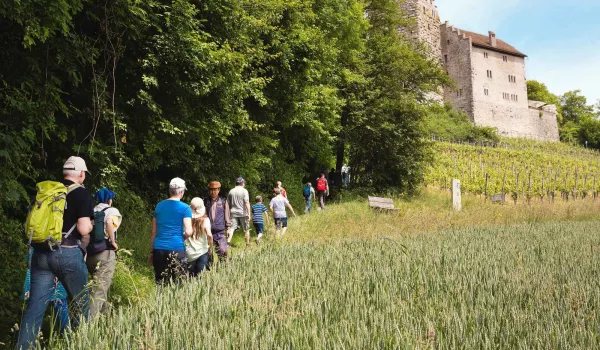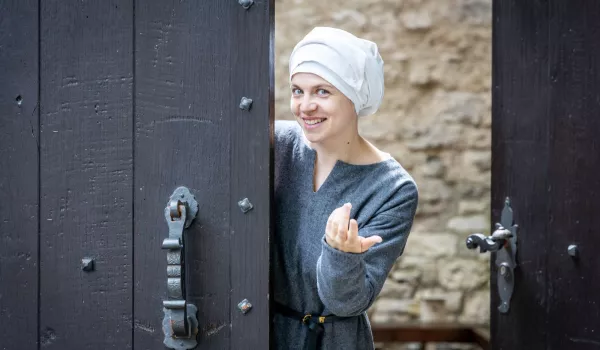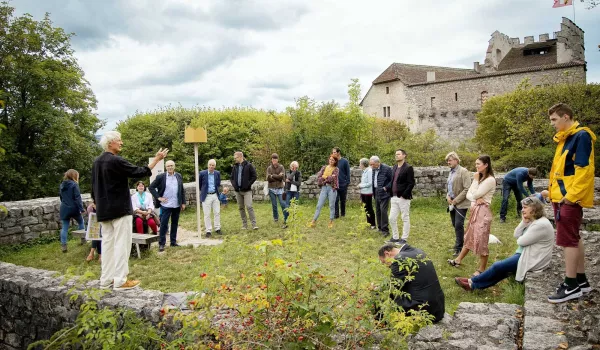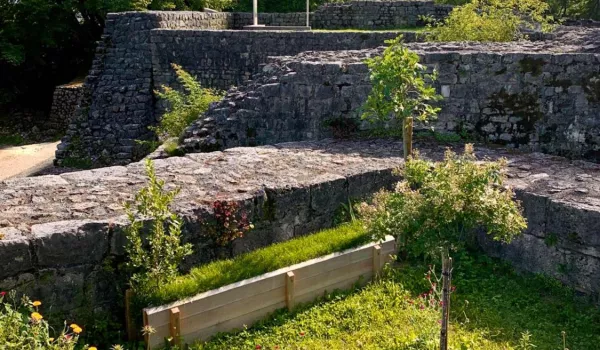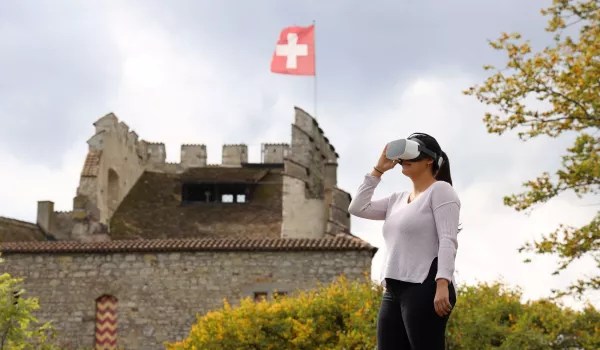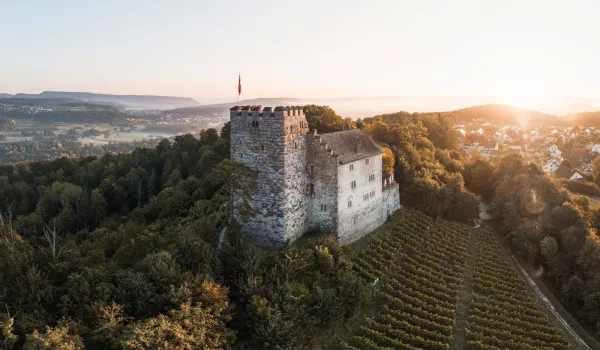Habsburg Castle
Habsburg, AG
One thousand years ago, in Habsburg Castle the dynasty of the same name laid the foundations of their global empire. Today, exhibitions, guided tours and events trace the fascinating history of the legendary castle and its aristocratic family.
The ancestral castle of the Habsburgs
Habsburg Castle sits commandingly on the Wülpelsberg near Brugg. Here, the rise of the Habsburgs to world power began around 1030. Only the rear part of the former double castle still stands. The view from the majestic tower towards the Aare valley, Schenkenberg valley and Eigenamt is impressive. At 68.5 meters, the well in the castle courtyard is one of the deepest medieval wells in Switzerland.
Tour of the “Habsburg Kings’ Route”
Today, Museum Aargau at Habsburg Castle presents the history of the Habsburg dynasty in an interactive and experience-oriented way. The self-guided “Habsburg Kings’ Route” tour traces the rise of the Habsburgs to world power at six audio points. The ruins of the front castle and other areas can be visited, and a small exhibition in the tower explains the history of the building and the settlement. Using virtual reality goggles, a panoramic flight reveals the imposing size of the castle commanding the Wülpelsberg in 1200.
Guided tours, dining theatre and events
In Habsburg Castle, Museum Aargau offers themed guided tours and culinary theatre shows for groups and schools. Events are held regularly. With the castle restaurant and the wonderful surroundings, the castle is also an ideal destination for hiking groups and families.
April to October:
Monday closed
Tuesday - Sunday and public holidays: 10:00 - 17:00
November to March:
Open during the operating hours of the castle restaurant.
Free admission
Picnicking in the castle courtyard is permitted. Benches and tables are available. Eating and drinking in the castle are not permitted.
Habsburg Castle is only partially accessible with a wheelchair or walking frame due to the medieval architecture and staircases. The castle terrace and the restaurant are accessible with wheelchair.
Dogs are not permitted in the exhibition rooms (tower).
Castle restaurant for anything from light bites to gourmet menus. Medieval dishes are available on request.
For hire
Get married at Habsburg Castle, celebrate your family party here or host a conference: Habsburg Castle with its restaurant is the perfect location for weddings, parties, meetings and events.
Room hire and celebrations - Habsburg Castle
Hike the Habsburg Trail from Wildegg to Habsburg or from Brugg to Habsburg. Cycle paths along the Aare from Brugg.
Accommodation:
Centurion Towerhotel, Windisch-Brugg
Brugg Youth Hostel, Brugg
Hotel Rotes Haus
Arrival
Schloss Habsburg
Schlossgasse 30
5245 Habsburg
By train
The quickest way to reach Habsburg Castle is via Brugg railway station.
From Brugg, take bus 366 to the “Habsburg Dorfplatz” stop. From here it is about a 10-minute walk to the castle.
From Brugg, Bus 368 also runs to the “Schinznach Bad, Aquarena” stop. From here, a beautiful walk leads to Habsburg Castle (approx. 1 hour).
by car
From Zurich: Highway A1, exit Brugg
From Basel: Highway A3, exit Brugg
From Bern: Highway A1, exit Aarau-Ost (Hunzenschwil)
Free parking is available approx. 200 meters below the castle. There are no official parking spaces for people with disabilities. The walk from the carpark to the castle takes approx. 5 minutes.
on foot
Walk (4 km) of approx. one hour from Brugg. Signposted from Brugg railway station.
Arrival with Google Maps
